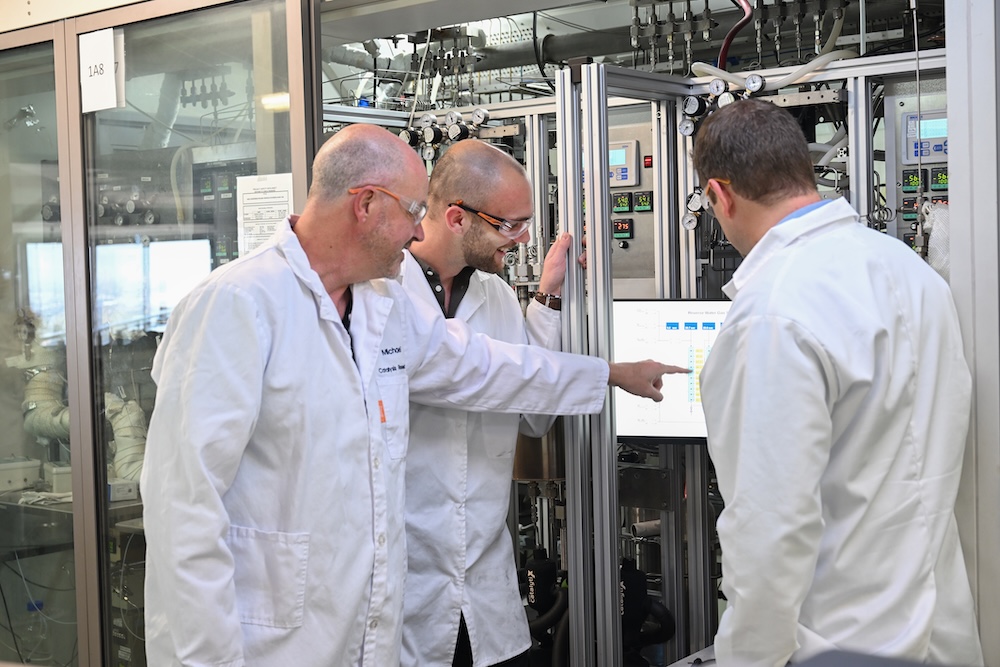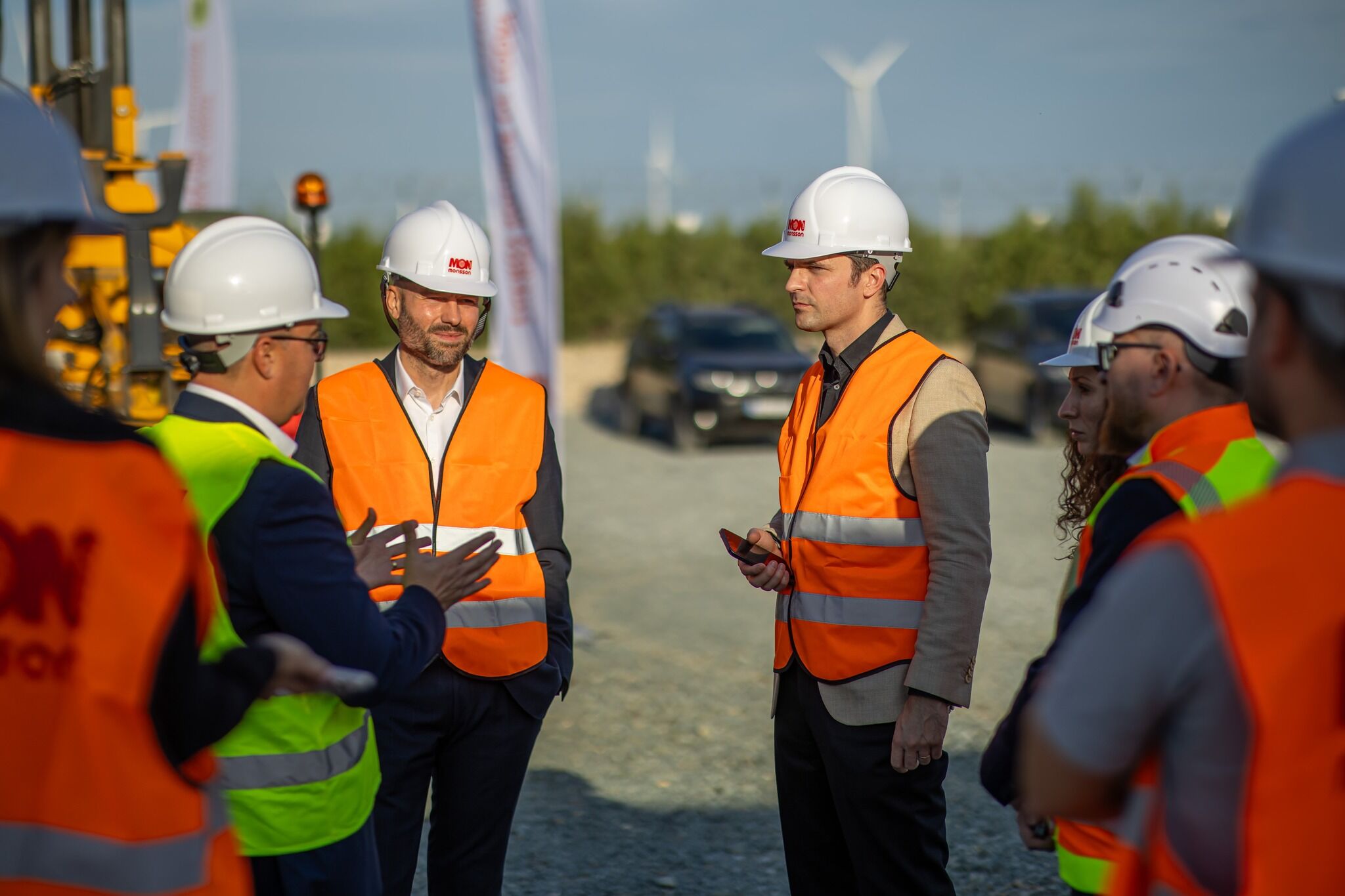Market Analysis Report: Investment Trends and Sustainable Development Goal Alignments
Energy Infrastructure Investment and its Role in Sustainable Goals
A recent analysis of the energy infrastructure sector highlights investment opportunities that align with several key Sustainable Development Goals (SDGs). The focus on companies like Keyera (KEY) underscores the critical link between financial markets and the infrastructure necessary for sustainable economic growth and energy transition.
- SDG 7: Affordable and Clean Energy
- SDG 9: Industry, Innovation, and Infrastructure
- SDG 8: Decent Work and Economic Growth
- Strategic Acquisitions for Energy Infrastructure: CIBC identifies Keyera as a top pick, citing the unrealized value in its pending acquisition of Plains’ Natural Gas Liquids (NGL) assets. This investment in critical energy infrastructure is fundamental to building resilient systems as outlined in SDG 9.
- Market Conditions and Economic Resilience: Despite commodity price volatility, the sector’s performance is crucial for economic stability. Companies with U.S. dollar exposure are noted to have a tailwind, demonstrating the financial dynamics that support the large-scale investment required for SDG 8.
- Supporting Energy Transition: Investment in NGL assets and gas exposure (e.g., WMB) plays a role in the broader energy landscape. While not exclusively renewable, this infrastructure is part of the transitional phase necessary to ensure a stable and affordable energy supply, a core tenet of SDG 7.
Real Estate Sector Focus on Social Sustainability and Inclusive Communities
Analysis from Scotiabank points to seniors housing as a preferred real estate asset class. This investment trend directly addresses the social components of sustainable development, focusing on demographic needs and community well-being.
- SDG 3: Good Health and Well-being
- SDG 11: Sustainable Cities and Communities
- Investment in Seniors Housing: The preference for Seniors Retirement Class A properties reflects a market response to demographic shifts. Investing in quality housing for the elderly is a direct contribution to promoting health and well-being for all ages, a key target of SDG 3.
- Building Inclusive Communities: By focusing on specific housing needs, the real estate market can contribute to creating age-inclusive and sustainable communities. The stability and growth in this sub-sector support the development of infrastructure that serves vulnerable populations, aligning with the aims of SDG 11.
- Market Stability and Geographic Focus: The report notes stability in national capitalization rates, with Montreal Retail also showing strength. This indicates that targeted real estate investments can provide stable economic returns while simultaneously fulfilling critical social infrastructure needs.
Global Asset Allocation and Financing for Development
A report from Citi on global asset allocation funds reveals a continued risk-on sentiment among managers. These capital flows have significant implications for financing sustainable development globally, particularly in emerging economies.
- SDG 17: Partnerships for the Goals
- SDG 10: Reduced Inequalities
- SDG 8: Decent Work and Economic Growth
- Increased Investment in Emerging Markets (EM): Fund managers significantly increased their overweight position in EM credit and maintained a long position on EM foreign exchange. This flow of capital is vital for achieving the SDGs in developing nations, as highlighted in SDG 17, which calls for strengthening the means of implementation and mobilizing financial resources.
- Driving Global Economic Growth: The overall risk-on approach, with increased positions in global equities (Japan, UK, China), supports global economic activity. This broad-based investment contributes to the sustained economic growth targeted by SDG 8.
- Potential for Reducing Inequality: By directing capital towards emerging markets, global asset allocators can play a role in fostering economic development that may contribute to reducing inequalities between countries, a primary goal of SDG 10.
Technological Innovation and the Future of Decent Work
The introduction of advanced robotics in logistics and warehousing, as noted in a report on Amazon, brings to the forefront the intersection of technological innovation and its impact on the workforce.
- SDG 9: Industry, Innovation, and Infrastructure
- SDG 8: Decent Work and Economic Growth
- Advancing Industrial Innovation: The deployment of new cost-cutting robots represents a significant advancement in industrial automation. This aligns with SDG 9’s call to build resilient infrastructure, promote inclusive and sustainable industrialization, and foster innovation.
- Implications for Decent Work: The narrative surrounding automation raises critical questions about the future of employment. This development underscores the challenge within SDG 8 to promote full and productive employment and decent work for all, necessitating strategies for workforce adaptation, reskilling, and ensuring that technological gains are shared equitably.
Analysis of the Article in Relation to Sustainable Development Goals (SDGs)
-
Which SDGs are addressed or connected to the issues highlighted in the article?
The provided article is a financial market roundup focusing on investment analysis, stock picks, and asset allocation. As such, its direct connection to the Sustainable Development Goals is very limited. However, a few connections can be identified, primarily from one specific section:
-
SDG 8: Decent Work and Economic Growth
This is the most direct connection found in the article. The “Diversion” section explicitly mentions a headline: “Amazon claims the headline isn’t robots taking jobs as it reveals new cost-cutting robots”. This directly relates to the future of work, the impact of automation on employment, and economic productivity, which are central themes of SDG 8.
-
SDG 3: Good Health and Well-being & SDG 11: Sustainable Cities and Communities
An indirect and tenuous link can be made through the section “Seniors housing still best bet says Scotiabank.” The provision of adequate housing for the elderly is a component of ensuring healthy lives (SDG 3) and creating inclusive and sustainable communities (SDG 11). However, the article discusses this topic purely from a real estate investment and profit margin perspective (“cap rate,” “winners = Seniors Housing”), not from a social or sustainability standpoint concerning the quality, accessibility, or affordability of this housing for seniors.
-
SDG 7: Affordable and Clean Energy & SDG 9: Industry, Innovation and Infrastructure
A very weak connection can be inferred from the discussion of the “energy infrastructure sector.” The article mentions companies involved in pipelines and natural gas liquids (NGLs). These topics relate to energy (SDG 7) and infrastructure (SDG 9). However, the article’s focus is entirely on financial performance (“earnings season,” “top picks,” “commodity price volatility”) and lacks any discussion of energy sustainability, clean energy transition, or building resilient and sustainable infrastructure.
-
-
What specific targets under those SDGs can be identified based on the article’s content?
Based on the limited information in the article, specific targets can only be clearly identified for the most relevant SDG:
-
SDG 8: Decent Work and Economic Growth
- Target 8.2: “Achieve higher levels of economic productivity through diversification, technological upgrading and innovation…” The mention of Amazon introducing “new cost-cutting robots” directly points to technological upgrading and innovation aimed at increasing productivity.
- Target 8.5: “By 2030, achieve full and productive employment and decent work for all…” The phrase “robots taking jobs” highlights the societal challenge that automation poses to achieving the goal of full and productive employment.
-
Other SDGs (3, 7, 9, 11)
The article does not provide sufficient detail to link its content to any specific targets under these goals. For instance, while it mentions “Seniors housing,” it offers no information on its affordability or safety, which would be necessary to connect it to Target 11.1 (ensure access for all to adequate, safe and affordable housing). Similarly, the discussion on “energy infrastructure” lacks any context regarding energy efficiency or renewable energy to link it to targets under SDG 7.
-
-
Are there any indicators mentioned or implied in the article that can be used to measure progress towards the identified targets?
The article does not explicitly mention any official SDG indicators. However, the topics discussed imply the relevance of certain types of measurements:
-
SDG 8: Decent Work and Economic Growth
The discussion of “robots taking jobs” implicitly points to the need for indicators that measure the relationship between technology and labor markets. While no data is provided in the article, the issue itself is measured by indicators such as:
- Implied Indicator related to Target 8.2: Growth rate of labor productivity or the economic impact of automation.
- Implied Indicator related to Target 8.5: Changes in the employment-to-population ratio, unemployment rates by sector, or metrics tracking job displacement due to technological advancements.
-
Other SDGs
No indicators are mentioned or implied for the other tangentially related SDGs. The article’s financial metrics, such as “cap rate,” “EPS (Earnings Per Share),” and “EBITDA,” are measures of corporate financial health and investment return, not progress towards sustainable development.
-
SDGs, Targets and Indicators Identified in the Article
| SDGs | Targets | Indicators |
|---|---|---|
| SDG 8: Decent Work and Economic Growth |
|
The article does not provide specific data but implies the relevance of indicators that measure the impact of automation on employment. This could include metrics like the growth rate of labor productivity or changes in the employment-to-population ratio due to technological displacement. |
Source: theglobeandmail.com





